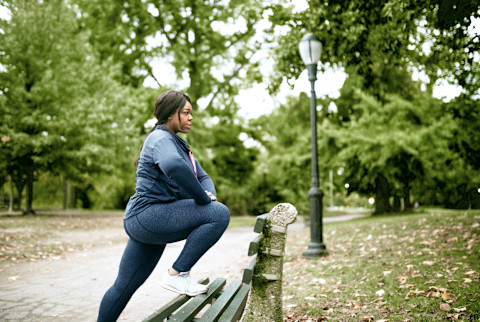How Air Pollution, Sunshine & Residential Greenness Affect Your Vitamin D Status

Science continues to confirm something humans have intuitively known for quite some time: Being in nature is good for our health.
And while the effect of green and blue spaces on our mental well-being, sleep health, and cognitive function has been established for some time now, scientists have recently started investigating how environmental factors directly affect vitamin D status.
In a new Environment International (EI) study1, scientists in China examined the correlation between residential greenness, air pollution, UV radiation, and vitamin D levels in adults over the age of 65. Using data from the 2012 and 2014 Chinese Longitudinal Healthy Longevity Survey and environmental exposure measurements from the same years, they found that the health of our environment does, indeed, play a role in our vitamin D status.
How the environment affects vitamin D status.
Both air pollution and vitamin D deficiency (VDD) are global issues. In the U.S., VDD affects 29% of adults2, and another 41%2 are vitamin D insufficient. According to the European Journal of Endocrinology, VDD affects 30 to 60% of the population in Western, Southern, and Eastern Europe and up to 80% of the population in Middle Eastern countries (where air pollution is far more prevalent).
During the Environment International study, residential greenness (i.e., the amount of natural vegetation surrounding a person's home) was found to decrease the likelihood of VDD.
UV radiation was also found to decrease the likelihood of VDD. And while it's true that increasing your sunlight exposure can raise your vitamin D levels, there are many other factors at play—such as age, sex, skin tone, latitude, climate, season, and time spent outside with skin exposed.
Evidence the vitamin D endocrine system (VDES), which modulates vitamin D skin synthesis and metabolism, is affected by exposure to environmental chemicals and air pollution. Air pollutants—specifically, PM2.5 (inhalable air pollutants that can travel deeply into your lungs) and ozone (O3)—were found to increase the likelihood of VDD during the EI study.
How to achieve vitamin D sufficiency, no matter where you live.
Sunshine isn't a reliable source of vitamin D for most people in most climates around the world. Food isn't a great solution either, considering vitamin D is found in minimal amounts in most dietary sources.
The truth is this: Supplementation is the most efficient way to reach healthy vitamin D status.* That said, not all vitamin D supplements are created equal.
Look for a daily supplement with a high-potency dose (5,000 IU) of vitamin D3 (not D2) and built-in healthy fats (for optimal absorption). mbg's vitamin D3 potency+ has you covered on all accounts.
The takeaway.
Vitamin D deficiency is a global problem, and environmental health affects healthy vitamin D status. According to a new study from Environment International on older adults in China, the likelihood of VDD is negatively correlated with residential greenness and UV radiation but positively correlated with air pollution.
To ensure your vitamin D status reaches and sustains sufficiency no matter where you live, consider taking a quality, high-potency vitamin D supplement like mbg's vitamin D3 potency+.*

